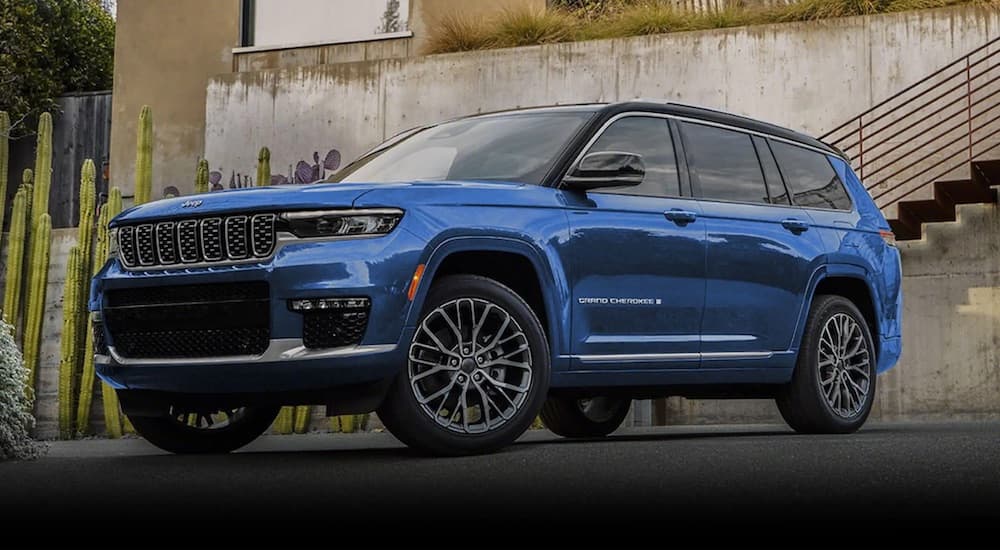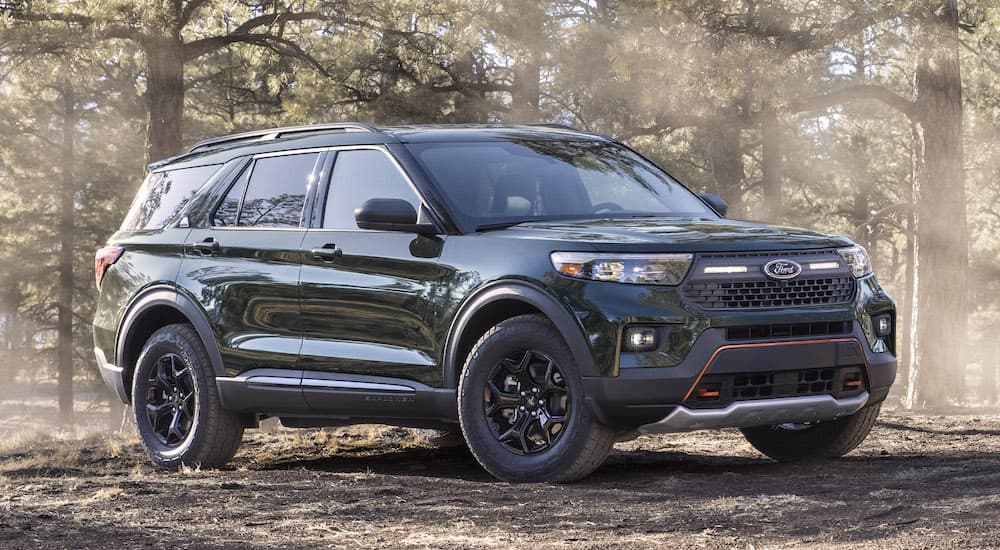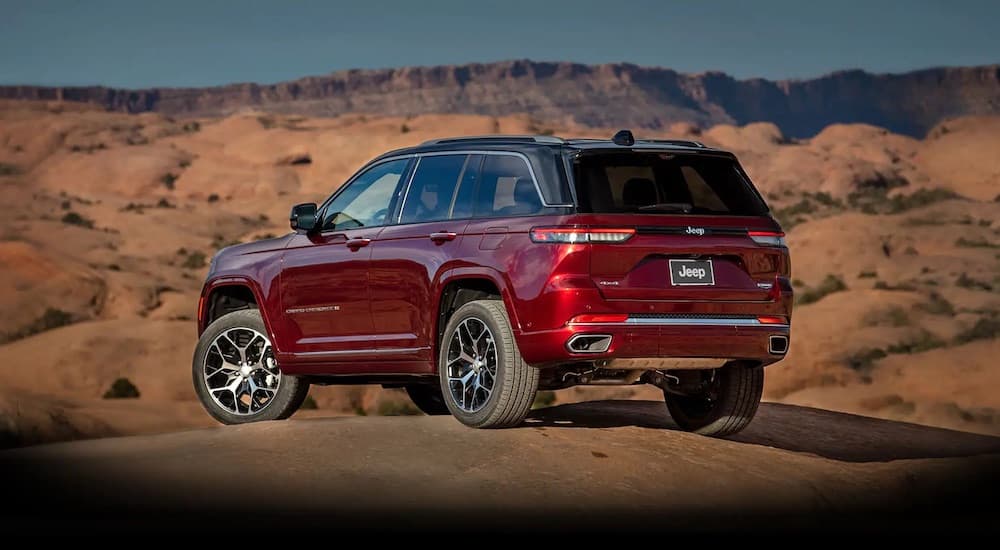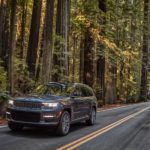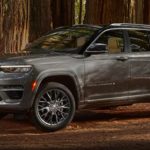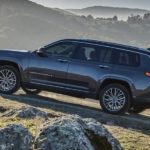Folks who have been driving for a few years are likely familiar with SUVs like the Jeep Grand Cherokee and the Ford Explorer. After all, the Jeep brand name has practically become synonymous with adventurous SUVs, and the Explorer is now in its sixth generation of production, but things are a little different in 2022. The Jeep Grand Cherokee has entered into a new generation and taken on an all-new personality all its own. Meanwhile, Ford continues to perfect the Explorer to meet the ever-changing needs of American drivers.
Deciding which vehicle makes the most sense for you, your life, and your driving style can take quite a bit of consideration. So what are some of the things you need to keep in mind when comparing the 2022 Jeep Grand Cherokee WL vs 2022 Ford Explorer? Let’s take a look at what makes these two vehicles stand out from the competition and each other.
First Impressions Are Everything
We like to say “looks don’t matter,” but at the end of the day, most of us have a certain aesthetic that we prefer. Some drivers don’t like brightly colored vehicles, for example, while others go out of their way to get custom paint jobs that reflect their personality. Different strokes for different folks, as the saying goes. At first glance, the 2022 Jeep Grand Cherokee WL and 2022 Ford Explorer are very different vehicles.
The Jeep Grand Cherokee is very clearly a Jeep. While it’s not as square and symmetrical as the Wrangler or Gladiator, there’s no doubt that this is a strong, capable SUV fresh from the minds that brought us the standard Cherokee. Available in two-row and three-row seating configurations, the Grand Cherokee is definitely one of the larger SUVs on the market, but those who need seating for up to 7 passengers or a massive 84.6 cubic feet of cargo space will appreciate what the Grand Cherokee L has to offer. And for those who don’t need quite that much, the two-row Grand Cherokee isn’t far behind, with room for 5 passengers and up to 70.8 cubic feet of cargo space.
The 2022 Ford Explorer, on the other hand, has a very athletic appearance, not unlike its performance-oriented Ford siblings. The Explorer is a three-row SUV, though drivers can choose from iterations with a second-row bench seat to accommodate 7 passengers or replace the bench with captain’s chairs, which lowers the seating capacity to 6. With the second and third-row seats folded, the Explorer has a bit more cargo space, at 87.8 cubic feet at your disposal.
The obvious advantage held by the Jeep in this instance is flexibility, in that drivers can select the Grand Cherokee or Grand Cherokee L, which gives them two rows or three rows of space. On the other hand, the Explorer comes in only one configuration, which provides an impressive amount of space for those who want it, but may feel a little too big for those who don’t always need the seats or cargo room.
Getting Behind the Wheel
Performance is a big deal, especially in a big vehicle. Those who drive SUVs want to know that they can accelerate, brake, and navigate city streets without an issue. Therefore, it’s important to have a vehicle with enough power under the hood and enough control in the cabin to keep things going smoothly, even when the going gets a little rough.
The 2022 Jeep Grand Cherokee WL comes from a long line of rugged and capable vehicles. With three available 4×4 systems, optional Quadra-Lift suspension, and precision steering engineering, the Grand Cherokee maintains impeccable driving manners, regardless of its size.
The standard engine offered in the Grand Cherokee is a 3.6L Pentastar V6, which should be familiar to long-time Jeep aficionados. With up to 293 hp and 260 lb-ft of torque, Grand Cherokees equipped with this engine can tow up to 6,200 lbs. Thanks to technological advances that have improved fuel efficiency, it can also get up to 26 MPG on the highway, which is quite reasonable among SUVs of its size. Those who crave a little more power, whether to tow loads up to 7,200 lbs or for the sheer enjoyment of driving, can opt for the available 5.7L Hemi V8 engine, which takes the excitement level up several notches with 357 hp and 390 lb-ft of torque.
At first glance, the Explorer has some pretty impressive engine options. The base engine option is a 2.3L turbocharged inline-4 good for 300 hp and 310 lb-ft of torque. Rear-wheel drive versions of the Explorer running this engine can get up to 28 MPG of fuel on the highways. The sportier engine option, which comes standard in the new ST trim and upscale King Ranch and Platinum trims, is a 3.0L twin-turbocharged V6, which provides 400 hp and 415 lb-ft of torque.
However, if towing is something you’ll need to do frequently and with gusto, the Explorer has a little bad news to follow these impressive powerhouses: it can only accommodate up to 5,300 lbs of towing weight. So, while it may be plenty zippy, it hasn’t yet channeled that into pulling a trailer full of camping gear, adventure equipment, boats, or whatever you need to fully enjoy your destination.
What Happens When You Leave the Pavement?
Not every SUV driver has the need for a fully-loaded off-road vehicle. In fact, drivers are becoming more and more enchanted with four-wheel drive performance, even on city streets. When it’s wet or cold, that extra bit of traction control can mean the world to a car full of children and other precious cargo.
Therefore, Jeep has created a lineup of Grand Cherokees that offer all of the Jeep ruggedness without requiring you to understand how an e-locking rear differential can assist you on a climb. However, for those who thoroughly enjoy leaving the pavement behind, the Grand Cherokee Trailhawk is ideal. It has received its Trail Rated badge, meaning it has what it takes when it comes to traction, ground clearance, maneuverability, articulation, and water fording. It can splash through up to 24 inches of water, with a total of 11.3 inches of ground clearance. Jeep’s Active Drive II and Active Drive Lock technology are also available on the Trailhawk model, allowing for extra torque, traction, and low-range performance.
The Ford Explorer offers the Timberline trim, which comes with standard skid plates, a Terrain Management system to give the Explorer a boost through unfamiliar lands, and a limited-slip rear axle. Intelligent 4×4 capability helps smooth out the road as needed. It has borrowed a few suspension cues from the Ford Interceptor Utility SUV to help keep it balanced over rough terrain, but it simply lacks the Jeep technology that has made the brand superb at taking on a variety of surfaces. Additionally, ground clearance is a mere 8.66 inches.
Which One Fits?
As with all vehicles, there is a lot more to the 2022 Jeep Grand Cherokee and Ford Explorer. We’ve barely looked at all of the comfort and convenience features and all the optional packages that can be added to make your SUV absolutely perfect for your needs. Both brands offer a bevy of creature comforts, including massaging seats, premium audio systems, and superb safety technology. Depending on the trim selected, you can turn your Jeep Grand Cherokee or Ford Explorer into a full-on glamping experience or go for just what you need to enjoy the drive.
However, for most people, a vehicle is more than automatic climate control or the most advanced infotainment system. For many drivers, the capacity and performance factors are most important when it comes to bringing home a brand new vehicle. When it comes to the Grand Cherokee WL or the Ford Explorer, drivers will need to decide if bigger is better or if capability is king.
